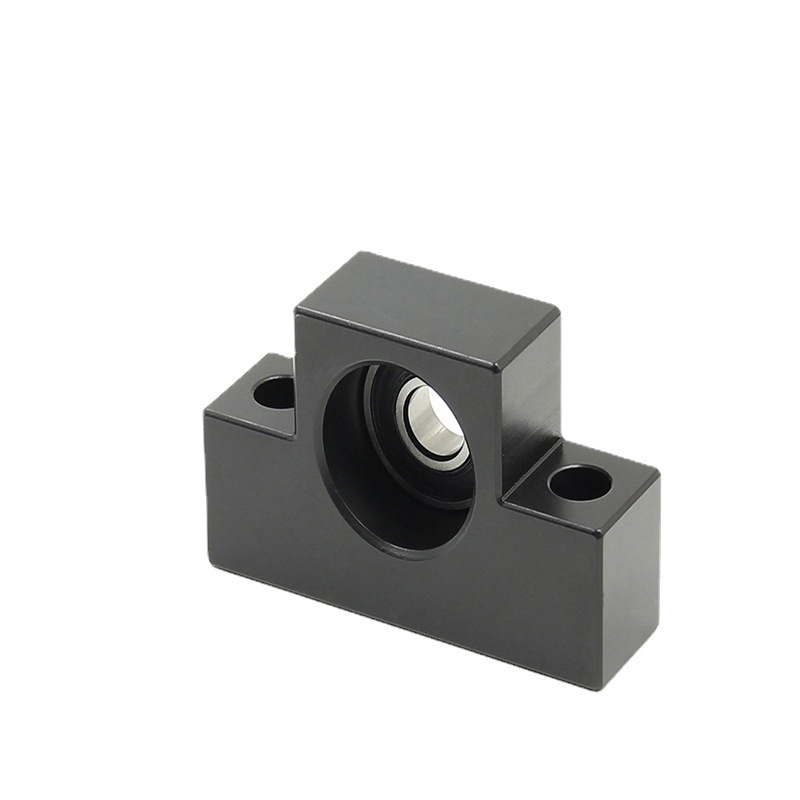What Makes Bearing Pedestals Critical for Industrial Machinery Performance?
2025-08-06
In the intricate ecosystem of industrial machinery, every component plays a vital role in ensuring smooth operation, but few are as foundational as bearing pedestals. These unassuming structures serve as the backbone for bearings, which reduce friction and enable rotational movement in everything from conveyor belts and pumps to turbines and manufacturing equipment. Without reliable bearing pedestals, even the highest-quality bearings would fail to perform, leading to machinery breakdowns, increased maintenance costs, and operational downtime. As industries strive for greater efficiency, durability, and safety, understanding why bearing pedestals are indispensable and how they contribute to machinery performance is essential. This guide explores the role of bearing pedestals, their manufacturing processes, detailed specifications of our precision-engineered products, and answers to common questions, highlighting their critical importance in industrial settings.
Trending News Headlines: Top Searches on Bearing Pedestals
- "2024’s Most Durable Bearing Pedestals for Heavy-Duty Machinery"
- "How Bearing Pedestals Reduce Downtime in Manufacturing Plants"
- "Custom Bearing Pedestals: Solving Unique Industrial Alignment Challenges"
What Are Bearing Pedestals and Why Are They Essential?
Ensuring Precision Alignment
Proper alignment of bearings is crucial for machinery performance. Misaligned bearings can cause uneven wear, increased friction, and premature failure, leading to costly repairs and downtime. Bearing pedestals are engineered to hold bearings in precise positions, maintaining alignment even under high loads or vibrations. This precision ensures that the rotating shaft operates smoothly, reducing energy consumption and extending the lifespan of both the bearings and the machinery. In applications such as conveyor systems or precision manufacturing equipment, where even minor misalignment can disrupt production, the stability provided by bearing pedestals is indispensable.
Absorbing and Distributing Loads
Industrial machinery often operates under heavy loads, whether from the weight of the shaft itself, the materials being processed, or the forces generated by rotation. Bearing pedestals are designed to absorb these loads—both radial (perpendicular to the shaft) and axial (parallel to the shaft)—and distribute them to the machinery’s frame or foundation. This prevents concentrated stress on the bearings, which could otherwise lead to cracking, deformation, or failure. For example, in large pumps or turbines, where shafts may weigh hundreds of kilograms, robust bearing pedestals ensure that loads are evenly dispersed, protecting the bearings and ensuring continuous operation.
Protecting Bearings from Contaminants
Bearings are highly sensitive to contaminants such as dust, dirt, moisture, and debris, which can cause abrasion, corrosion, or blockage. Bearing pedestals act as a protective housing, shielding bearings from these external elements. Many pedestals are designed with seals or shields that create a barrier, preventing contaminants from entering while allowing for proper lubrication retention. In harsh environments—such as mining, construction, or food processing—this protection is critical for maintaining bearing performance and reducing maintenance intervals. For instance, in a food processing plant, bearing pedestals with food-grade seals prevent particles from contaminating the product while safeguarding the bearings from water or cleaning chemicals.
Facilitating Maintenance and Replacement
Efficient maintenance is key to minimizing downtime in industrial operations. Bearing pedestals are designed to simplify the installation, inspection, and replacement of bearings. Many models feature split designs, allowing technicians to access the bearing without removing the entire shaft or disassembling surrounding components. This reduces maintenance time and labor costs, ensuring that machinery can be returned to operation quickly. Additionally, standardized pedestal designs enable easy replacement of worn parts, ensuring compatibility with a wide range of bearings and machinery models.
Adapting to Diverse Industrial Environments
How Are Bearing Pedestals Designed and Manufactured?
Design Engineering
The design phase begins with understanding the application requirements, including the type of bearing to be used, the shaft diameter, the expected loads (radial and axial), operating temperature, and environmental conditions (e.g., exposure to moisture, chemicals, or vibrations). Engineers use computer-aided design (CAD) software to create 3D models of the pedestal, ensuring that it provides a precise fit for the bearing and shaft while accommodating load distribution needs. Finite element analysis (FEA) is often used to simulate stress and strain under operating conditions, optimizing the design for strength and durability without unnecessary weight.
Key design considerations include:
- Bearing Fit: The pedestal’s bore (the opening that houses the bearing) must have tight tolerances to ensure the bearing is held securely without excessive pressure, which could distort the bearing or impede rotation.
- Load Distribution: The pedestal’s structure is designed to distribute loads evenly, with reinforced sections in areas subject to high stress.
- Sealing and Lubrication: Provisions for seals, shields, or lubrication ports are integrated into the design to protect the bearing and ensure smooth operation.
- Mounting Features: Holes, slots, or flanges are included to facilitate secure mounting to the machinery frame, with alignment features to ensure proper positioning.
The choice of material depends on the application’s requirements:
- Cast Iron: A popular choice for general industrial applications, cast iron offers high strength, good vibration damping, and cost-effectiveness. It is suitable for moderate temperatures and dry environments.
- Steel: Carbon steel or alloy steel is used for high-strength applications, such as heavy machinery or high-load environments. It can be heat-treated to enhance hardness and durability.
- Stainless Steel: Ideal for corrosive environments (e.g., food processing, marine, or chemical industries), stainless steel resists rust and oxidation, ensuring long-term performance.
- Composite Materials: For lightweight or specialized applications, composites (e.g., glass-reinforced plastic) offer corrosion resistance, low weight, and electrical insulation, though they may have lower load capacities than metal options.
Once the design is finalized, the manufacturing process varies based on the material:
- Casting: For cast iron or steel pedestals, casting is a common method. Molten metal is poured into a mold shaped like the pedestal, then allowed to cool and solidify. This process is cost-effective for large production runs and can create complex shapes with good dimensional accuracy.
- Machining: After casting, the pedestal undergoes machining to refine critical surfaces, such as the bearing bore, mounting holes, and sealing faces. Precision tools like lathes, milling machines, and grinders are used to achieve tight tolerances (often within ±0.01mm for critical dimensions).
- Fabrication: For steel pedestals with simple designs, fabrication (cutting, bending, and welding steel plates) may be used. This is suitable for low-volume production or custom designs.
- Heat Treatment: Steel pedestals may undergo heat treatment (e.g., annealing or quenching) to improve hardness, toughness, or stress resistance, enhancing their performance in high-load applications.
- Surface Treatment: To improve corrosion resistance or reduce friction, pedestals may be coated with paints, galvanizing, or specialized coatings (e.g., epoxy for chemical resistance).
Every bearing pedestal undergoes rigorous quality control checks to ensure it meets design specifications. This includes:
- Dimensional Inspection: Using calipers, micrometers, or coordinate measuring machines (CMM) to verify that critical dimensions (bore diameter, mounting hole positions, etc.) are within tolerance.
- Material Testing: Testing for material composition and mechanical properties (e.g., tensile strength, hardness) to ensure they meet industry standards.
- Load Testing: For high-performance pedestals, load testing may be conducted to verify their ability to withstand specified loads without deformation or failure.
- Visual Inspection: Checking for defects such as cracks, porosity, or surface irregularities that could compromise performance.
Our Bearing Pedestals Specifications
|
Parameter
|
Cast Iron Bearing Pedestals (Type P)
|
Stainless Steel Bearing Pedestals (Type S)
|
Heavy-Duty Steel Bearing Pedestals (Type H)
|
|
Material
|
Grey cast iron (GG25, GG30)
|
Austenitic stainless steel (304, 316)
|
Carbon steel (S45C, S50C) with heat treatment
|
|
Bearing Bore Diameter
|
15mm to 150mm (0.59" to 5.91")
|
15mm to 100mm (0.59" to 3.94")
|
50mm to 200mm (1.97" to 7.87")
|
|
Maximum Radial Load
|
50kN to 300kN
|
40kN to 200kN
|
200kN to 800kN
|
|
Maximum Axial Load
|
10kN to 50kN
|
8kN to 40kN
|
50kN to 200kN
|
|
Operating Temperature Range
|
-20°C to 120°C (-4°F to 248°F)
|
-50°C to 200°C (-58°F to 392°F)
|
-30°C to 300°C (-22°F to 572°F)
|
|
Mounting Type
|
Base-mounted (with bolt holes)
|
Base-mounted or flange-mounted
|
Base-mounted with reinforced ribs
|
|
Sealing Options
|
Felt seals, rubber lip seals, labyrinth seals
|
Viton® seals (chemical resistant), stainless steel shields
|
Metal face seals, double lip seals
|
|
Surface Finish
|
Painted (epoxy) or untreated
|
Passivated (for corrosion resistance)
|
Powder-coated or oiled (for rust prevention)
|
|
Tolerance
|
Bore: H7, Mounting Surfaces: ±0.1mm
|
Bore: H7, Mounting Surfaces: ±0.05mm
|
Bore: H6, Mounting Surfaces: ±0.05mm
|
|
Applications
|
General machinery, conveyors, pumps
|
Food processing, marine, chemical plants
|
Heavy machinery, turbines, steel mills
|
|
Certification
|
ISO 9001, DIN 31630
|
ISO 9001, FDA (for food contact), DIN 31630
|
ISO 9001, ASTM A36, DIN 31630
|
|
Lead Time
|
2-3 weeks (standard), 1 week (rush)
|
3-4 weeks (standard), 2 weeks (rush)
|
4-6 weeks (standard), 3 weeks (rush)
|
FAQ: Common Questions About Bearing Pedestals
A: The inspection and maintenance frequency depends on operating conditions, but a general guideline is to inspect bearing pedestals every 3 to 6 months under normal operation. In harsh environments (high vibration, dust, or moisture), inspections should be more frequent (monthly). Key maintenance steps include checking for loose mounting bolts (tighten as needed), inspecting seals for damage or wear (replace if cracked or hardened), and ensuring proper lubrication (add grease through ports if applicable). Look for signs of overheating (discoloration), corrosion, or abnormal noise during operation, which may indicate misalignment, excessive load, or bearing failure. For heavy-duty applications, annual disassembly to clean the pedestal and inspect for cracks or wear is recommended. Regular maintenance prevents unexpected breakdowns and extends the lifespan of both the pedestal and the bearing.



